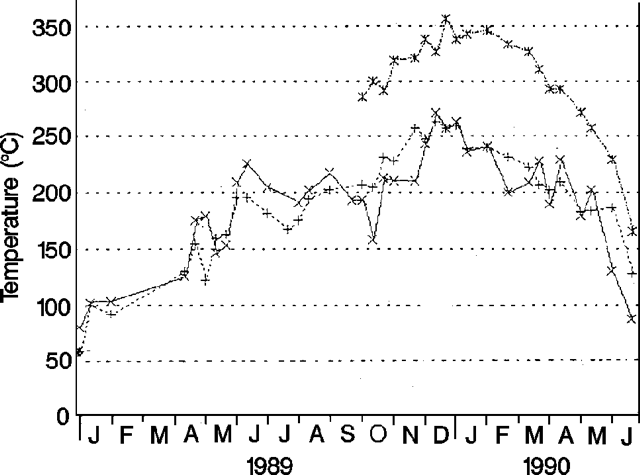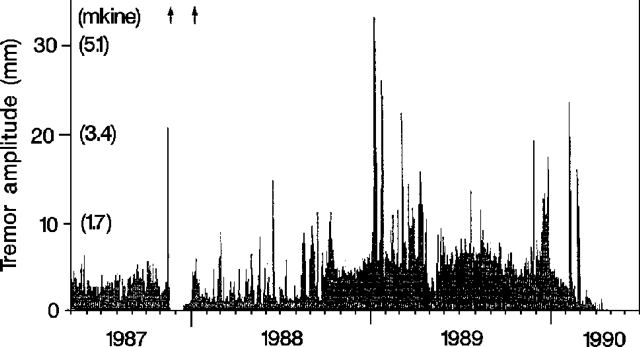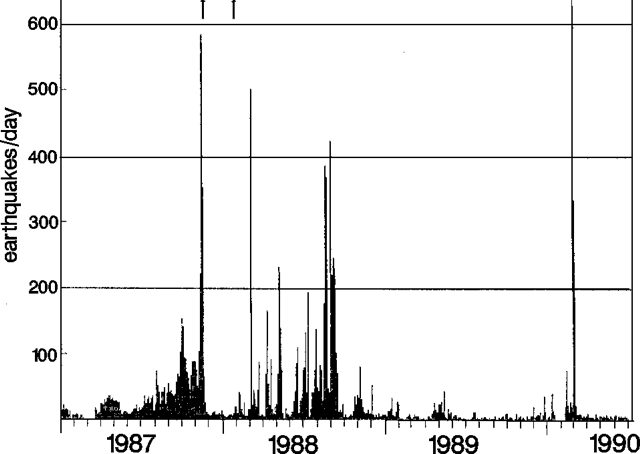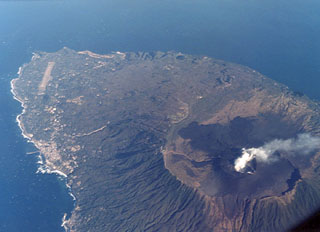Report on Izu-Oshima (Japan) — June 1990
Bulletin of the Global Volcanism Network, vol. 15, no. 6 (June 1990)
Managing Editor: Lindsay McClelland.
Izu-Oshima (Japan) Rapid decreases in steam cloud height, crater temperature, and tremor
Please cite this report as:
Global Volcanism Program, 1990. Report on Izu-Oshima (Japan) (McClelland, L., ed.). Bulletin of the Global Volcanism Network, 15:6. Smithsonian Institution. https://doi.org/10.5479/si.GVP.BGVN199006-284010
Izu-Oshima
Japan
34.724°N, 139.394°E; summit elev. 746 m
All times are local (unless otherwise noted)
Steam emission had gradually increased for more than 2 years and crater fumarole temperatures for at least 1 year, but fumarole temperatures began to drop in January (figure 17) and steam emission started a rapid decrease in mid-March. Steam emission had continued since the small explosions of 16-18 November 1987, when a crater, 300 m across and 150 m deep, was formed by collapse on the summit. Fumarole temperatures have been measured by infrared spot thermometry from the rim of the crater since December 1988.
 |
Figure 17. Temperatures recorded at three points in the crater of Oshima, January 1989-June 1990. Courtesy of JMA. |
Volcanic tremor, recorded almost continuously since January 1987, also began to decrease in March (figure 18). Since then, there have been few tremor events, with 10 weak tremor episodes recorded in April, and none in May or June. A M 6.5 earthquake on 20 February was centered at sea ~10 km W of the island. Aftershocks occurred along a N-S-trending line. On 1 March, a swarm of small summit-area earthquakes was recorded by a seismometer near the summit. The 1 March swarm was the most vigorous seismicity at the volcano since observations began in 1987 (figure 19). Following the swarm, seismicity on the island returned to normal levels.
 |
Figure 18. Daily maximum amplitude of volcanic tremor at Oshima, May 1987-June 1990. Arrows at top of figure mark eruptions. Courtesy of JMA. |
 |
Figure 19. Daily number of recorded earthquakes at Oshima, January 1987-June 1990. Arrows at top of figure mark eruptions. Courtesy of JMA. |
Geological Summary. Izu-Oshima volcano in Sagami Bay, east of the Izu Peninsula, is the northernmost of the Izu Islands. The broad, low stratovolcano forms an 11 x 13 km island constructed over the remnants of three older dissected stratovolcanoes. It is capped by a 4-km-wide caldera with a central cone, Miharayama, that has been the site of numerous recorded eruptions datining back to the 7th century CE. More than 40 cones are located within the caldera and along two parallel rift zones trending NNW-SSE. Although it is a dominantly basaltic volcano, strong explosive activity has occurred at intervals of 100-150 years throughout the past few thousand years. A major eruption in 1986 produced spectacular lava fountains up to 1,600 m high and a 16-km-high eruption column; more than 12,000 people were evacuated from the island.
Information Contacts: JMA.

